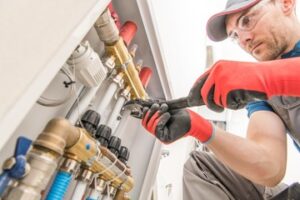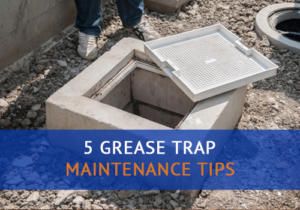Plumbing is a hands-on career that requires a lot of physical labor. It also involves a fair amount of customer interaction. If you are looking for a challenging and rewarding career, a plumber may be the right fit for you.

Construction plumbers are involved in new building projects from the outset, working from blueprints and architectural plans to design and install plumbing infrastructure. This includes laying pipes, connecting fixtures and appliances, and ensuring compliance with local building codes. Reach out to Plumber Granada Hills for expert assistance.
Pipe inspection is a vital service that allows plumbing professionals to detect and correct problems in the pipes before they escalate into major issues like water leaks or sewage backups. Whether for residential or commercial properties, a professional pipe inspection can help prevent costly repairs in the future and extend the lifespan of the plumbing system.
Many different methods are used for pipe inspection, including video imaging and ultrasonic testing. The type of inspection required will depend on the age and condition of the pipes, as well as the environment in which they are located. A good Charlotte plumber will know which method is best suited for each situation.
One of the most common and effective ways to inspect underground pipes is by CCTV inspection. This involves inserting a small camera into the pipes, which can provide high-resolution images of their interiors. This can reveal cracks, corrosion, or blockages that would otherwise be difficult to see. This method is also less invasive than other types of inspection, and can save both time and money.
In-line inspection (ILI) is another popular form of pipeline inspection. This method uses a robotic device called a “pig” to travel through the pipes and detect any defects. A variety of sensors on the pig detect the condition of the pipes, such as thickness and metal loss. The data is then analyzed and reported. This technique is highly effective and has a low risk of damage to the pipes.
In order to properly perform a pipe inspection, it is important that the person conducting the assessment has experience and knowledge of both the piping system being inspected and the materials involved in it. For example, an inspector with decades of experience inspecting metal piping may not be qualified to assess a thermoplastic piping system. This is why it is essential to have a comprehensive inspection procedure that covers all aspects of the piping system. The API 570 Inspection of Piping Code provides guidance for both in-service and new construction inspection of piping systems. The I4I Academy API 570 Piping Inspector Training course can provide you with the knowledge and skills to pass the inspection certification exam and become an authorized inspector.
Pipe Leak Detection
Pipe leaks are not just unsightly; they can also cause significant water damage to your property over time. If you think you have a leak, it’s essential to get it fixed as soon as possible to minimise the impact and keep your water bills under control. A professional plumber will use a range of specialist tools and techniques to find the source of the leak and repair it before the problem gets worse.
There are many signs of a leak in your home; dripping or bubbling sounds, visible cracks or damp patches, higher water bills than usual and unexplained spikes in usage are all common indicators that something is wrong. If you suspect you have a leak, it is important to turn off all of your appliances and check your water meter over several hours. If the meter reads higher than expected, there is likely a leak somewhere in your system.
If you cannot identify the source of the leak, a professional plumber will use specialised listening devices to locate the noise coming from the pipes. These are essentially digital acoustic detectors that can hear the sound of water escaping from the pipes, which is usually a hissing or whistling noise. By earmarking the location of the sound, plumbers can work out where the leak is located and how severe it is.
Another way plumbers detect leaks is by using a special waterproof video camera to examine the interior of your pipes. The camera is inserted into the pipes and relays a live feed to a monitor, which allows the plumber to see any damage or obstructions in the pipe. This type of inspection is particularly useful for older or hard-to-reach pipes.
In addition to these sophisticated tools, plumbers often use more basic methods of leak detection. One of these is to flush non-toxic dye tablets into the toilet tanks and supply lines, which helps to pinpoint the location of the leak. Alternatively, they may use electromagnetic or infrared sensors to detect moisture behind walls, floors and ceilings without drilling test holes.
If the plumber discovers a leak, they will typically replace or repair the affected section of pipe. If the pipes are beyond repair, they can choose to reline them instead, which will prevent further damage but not fully restore their structural integrity.
Pipe Repair
When your pipes are leaking, broken or damaged, you need a plumber who can quickly and efficiently repair the problem. The type of pipe repair required will depend on the cause, location and severity of the issue. Your plumber will evaluate the situation to determine if a repair or replacement is needed, and recommend the most effective solution.
If you notice a water leak, the first step is to turn off the main water supply valve located near the affected area. Next, your plumber will use a leak detection tool to locate the source of the leak and its size. Once the leak is located, a patch kit will be used to cover the hole and prevent further damage. The kit contains a rubber pad that fits over the hole and metal plates that compress the pad over the hole, creating a waterproof seal. Leak repairs using this method are usually temporary, but they can save you money on your water bill in the interim.
Pipe replacement is a more involved process that involves removing the old pipes and installing new ones. This is typically done when the pipes are corroded or have suffered serious damage due to age, accidents or even natural disasters. A plumber will start the process by thoroughly inspecting the existing pipelines and pinpointing any problematic areas. They will then develop an appropriate strategy for replacement, taking into consideration your property’s layout, plumbing needs and any other factors that may affect the project’s cost or timeline.
A plumber may choose to replace pipes with different materials based on the circumstances. For example, if your home’s current pipes are made of outdated materials such as galvanized steel or clay, whole-home re-piping could be necessary to ensure the continued health and longevity of your plumbing system. Conversely, if you are planning a significant home remodel or expansion, this can be an ideal opportunity to upgrade your pipes with more durable and efficient materials.
Another reason to consider pipe replacement is if your existing pipes are causing noticeable problems such as excessive noise or vibration. This type of issue can be caused by poorly fitting joints or by sections that are rubbing against each other due to misalignment. A plumber can rectify this by soldering or welding the joints or re-aligning the sections. In some cases, a plumber may decide to use external pipe repair clamps. These devices are easy to use, light and can work with high internal water pressures. They are particularly effective for repairing PEX pipe leaks that occur at the crimp connections, which can easily be fixed by re-crimping the connection with a PEX crimp tool and a go/no-go gauge.
Pipe Replacement
The plumbing system is comprised of a network of pipes that ferry sewage to & away from the home. When they are cracked, broken, or damaged, sewage can back up into the home and cause serious health and safety issues. This is why it’s important to call a plumber right away when you suspect any problems with your pipes. The plumber will perform a thorough inspection and determine the best solution.
The plumber may recommend pipe repair or pipe replacement. The choice will depend on the extent of the damage, location of the pipes, and other factors. Pipe repair is typically less expensive and requires no excavation. Pipe replacement is more expensive but can offer a long-term solution that lasts for decades. It also offers the option to upgrade to newer, more durable pipe materials that provide better performance.
Pros of pipe replacement include safety and efficiency. Pipes that are severely damaged or corroded can leak, which causes water damage to floors, walls, and other surfaces in the home. Replacing these pipes eliminates this risk and ensures that any future problems will be prevented.
Cons of pipe replacement include the upfront cost and the time required for the project. This method usually requires extensive excavation and can disrupt the surrounding landscaping or flooring. It is also more labor-intensive than pipe relining and can take several days to complete.
If your pipes are old and in poor condition, replacing them may be a more economical choice than continuing to repair them. The cost of frequent repairs can eventually surpass the price of a single replacement. Your budget and future plans for your home should also be considered when deciding on the best course of action.
If you’re experiencing clogged toilets or drains, leaking ceilings or walls, or stains on your fixtures, it’s likely that your pipes are the culprit. Contact a plumber right away to schedule an inspection and discuss your options for repair or replacement.


